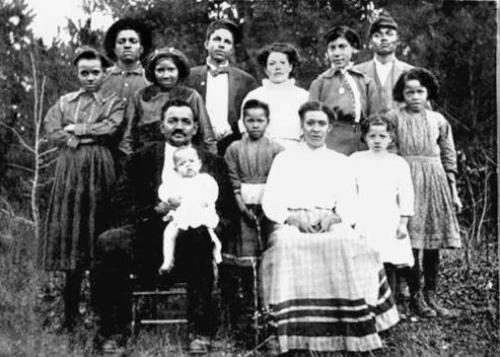Roslyn, Washington was a coal mining town located at the eastern base of the Cascade Mountains. The first commercial operations in Roslyn were initiated in 1886 by Logan M. Bullet, Vice President of the Northern Pacific Coal Company, (a subsidiary of the Northern Pacific Railroad). Within two years the town’s population grew to over 1,000 as miners from the eastern United States and Europe were attracted by the work the coal company offered.
Dissatisfied with wages and working conditions, the white miners went on strike in 1888. Company officials recruited strikebreakers including African Americans. The first black miners came to Roslyn under these circumstances. James E. Shepperson was hired by the company to bring these black miners from Virginia, North Carolina and Kentucky to replace the striking miners. Most of the African Americans did not know at the time they were being recruited to break an ongoing strike. Approximately 300 black miners came to Roslyn Washington between 1888 and 1889. Many brought their families, creating the single largest increase in the black population in the history of the Territory. As could be expected, resentment grew among the white out-of-work miners. “Sheriff Samuel T. Packwood of Kittitas County reported to Territorial Governor Eugene Semple, “There is a bitter feeling against the Negroes and U.S. Marshals among the miners, and I fear there will be bloodshed over the matter.”
Eventually the tensions eased and the black and white residents of Roslyn came to an understanding. When the entire community needed a school house, the black citizens of Roslyn offered up their church. After the strike was broken, white miners slowly returned to work and reconciled themselves to working along side black miners. The shared dangers of late 19th Century coal mining helped forge a bond between these groups. The demand for coal also meant expansion of mining in the region which in turn generated considerable work and reduced the sense of competition for jobs between the miners. Finally, when the United Mine Workers organized the workers, black and white miners entered the union as equals. Roslyn’s multi-ethnic citizens created a vibrant community as the town’s population continued to grow, peaking in 1930 at slightly more than 4,000 residents.
Several black fraternal organizations were created in Roslyn including the first Prince Hall Masonic Lodge in Washington Territory and a lodge of the Knights of Pythias. Black women in Roslyn joined such organizations as the Eastern Star and the Daughters of Tabernacle. African Americans also formed both Baptist and African Methodist Episcopal (AME) churches. The churches and fraternal organizations provided the community care during illness, a guarantee of burial rights, and an active social life which included band concerts, speakers, and benefits.
The last coal mine in the area shut down in 1963. The black population, however, began to decline in the 1920s. By the 1960s, the town’s population dwindled to just over 1,000 and was overwhelmingly white. By the early 1970s only one African American family remained in the town, the Cravens. Ironically in 1976, William Craven was elected mayor of Roslyn and thus became the first black mayor in the history of Washington. Craven served as mayor until 1980.

